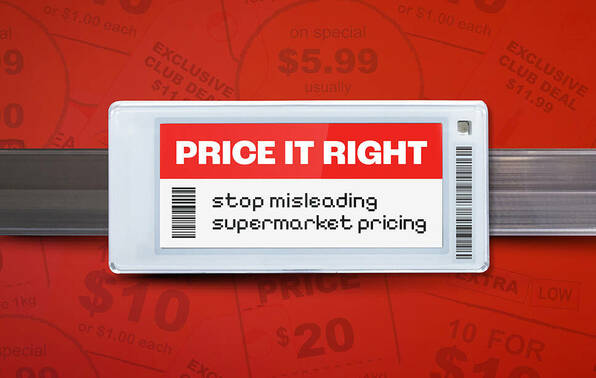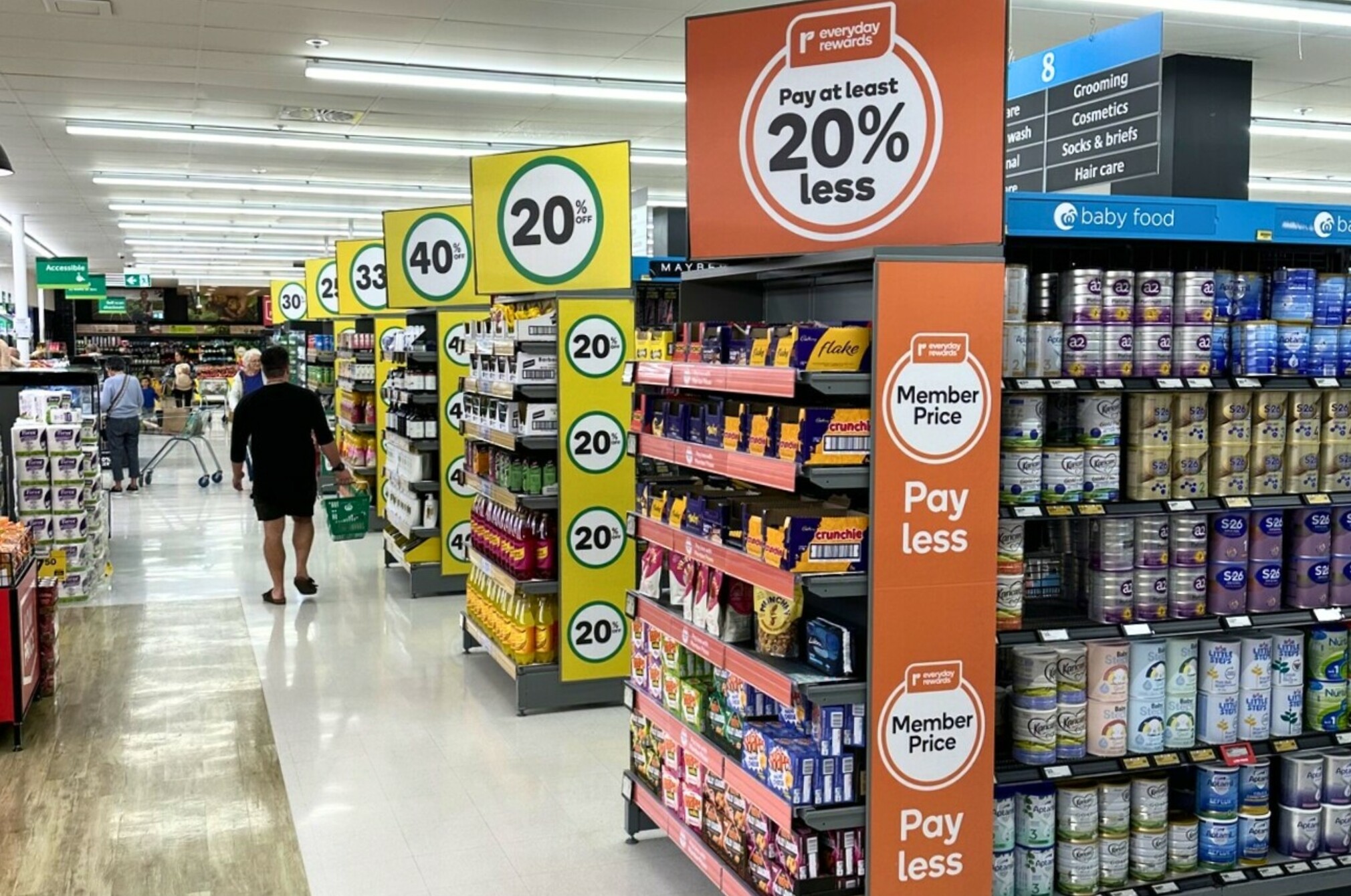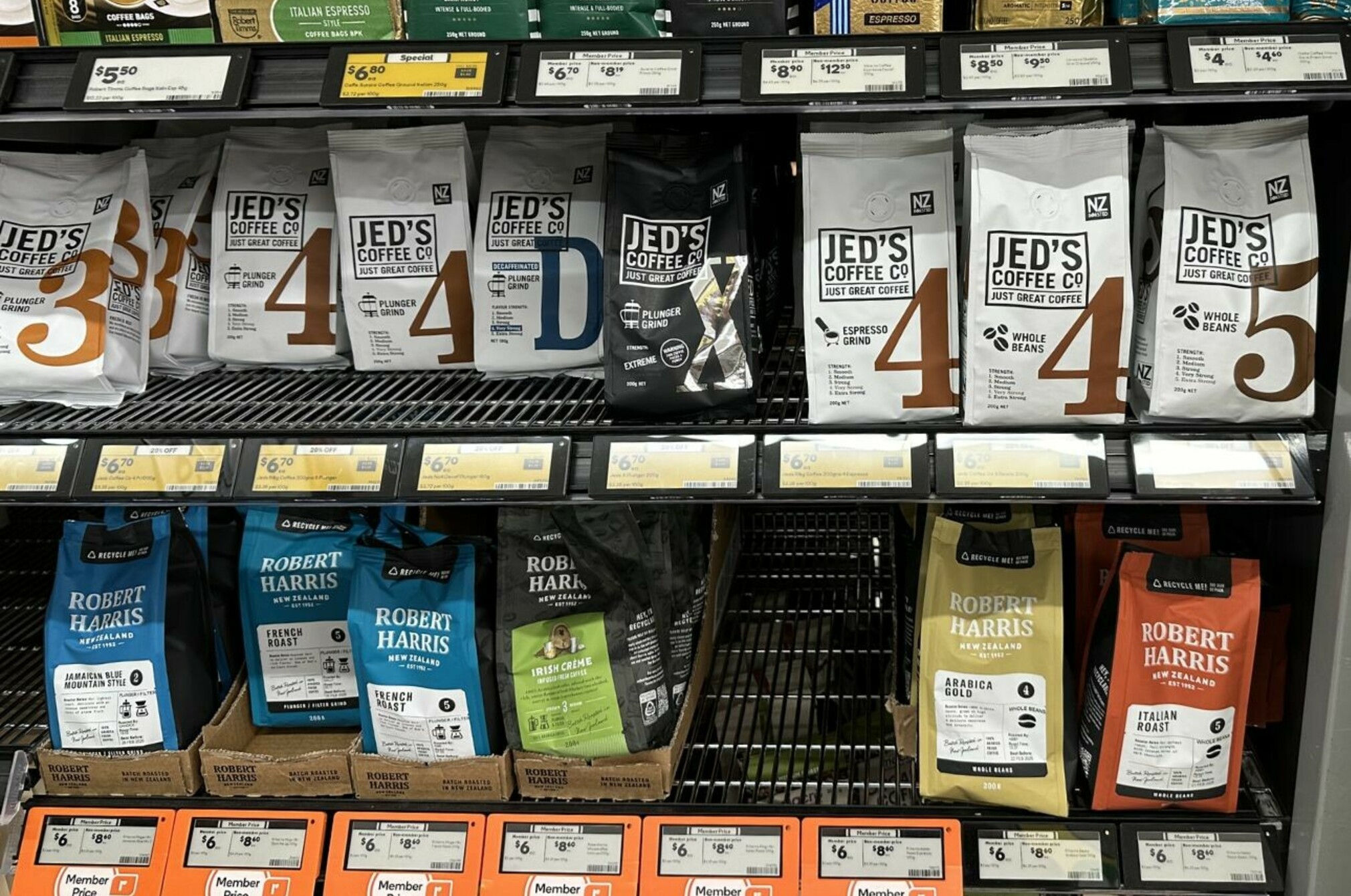A marketing professor explains how shops trick you into buying more

Sommer Kapitan knows intimately how marketing works and the effect it has on her brain. But after a near lifetime of study, even she finds it hard to say no.
"Everything is flashing, everything is moving," says Sommer Kapitan.
She's in a large Auckland mall, her eyes getting wide as they dart between the digital displays, advertising hoardings, storefront windows and sales signs.
Kapitan looks stressed out. "You're seeing so much you can't make a proper decision," she says. "Look at all this, the flashing, the lights, ding, ding, ding, ding." It is, she agrees, an environment comparable to a casino.
She sighs and declares: "It's too much."
It's just after midday on a busy Thursday and we've only just stepped inside the front doors of St Lukes, a Westfield mall buzzing with busy shoppers hungry for discounts, bargains, and, as the smells from the food court swirl around us prove, a hot meal.

Kapitan's brain is working overtime. As an associate professor of marketing at Auckland University of Technology , she has intimate knowledge of how marketing affects consumer behaviour, what all those colours, signs and sales prompts are doing to our brains, and how we're programmed to respond to them.
I asked Kapitan to meet me at marketing's ground zero – a mall – to explain how it all works. She agreed, but warned we could be there for hours. "One of my favourite things ... is to critique the hell out of things," she'd said in her email reply.
When you look for it, it’s everywhere, and standing in St Lukes you can’t avoid it. Mostly, all that marketing is designed to do one thing, says Kapitan: "To buy [this thing] at this time with this price.”

Sign the petition to make supermarkets price it right
Supermarket pricing errors are widespread and another blow to people’s budgets. Find out about our campaign to tell the government we need clear rules, stronger penalties and automatic compensation for shoppers when supermarkets get it wrong.
How marketing tactics work
Near the entrance of Westfield St Lukes, Kapitan spots something. She rushes to a toy shop display window and points at a life-size model of a Marvel superhero. “What is this giant Iron Man doing here?"
It's a question she already knows the answer to. "It's an attention-getter," she says. "My kid would be like, 'Mum! What's that?' It's smiling at you, it's got eyes, you have to engage."
According to Kapitan, that figure of Iron Man is the perfect example of marketing in action. "It’s $15,000. No one would buy that," she says. Instead, it’s a way to get people into the store. "My kid would run up ... ‘Come on in.’"
That, she says, is the purpose of marketing. She points to bright colours, signs and moving digital display boards. "All of this is competing for your attention," she says. Even the smells coming from the food court are a form of marketing. "It's [initiating] a fundamental impulse from the caveman era."
That’s what all those sales signs – I can see five of them from our spot by the front door – are designed to do. With marketing techniques honed through generations, finding a bargain has become something we’re all looking for.
"My mother raised me on coupons, ‘[If you find a good deal], you're a smart shopper’. I don't feel victorious if something's not on sale, I'm going to feel more victorious if something is on sale. That gives me a good feeling and then I'm reliant on it,” says Kapitan.
‘Everything’s on sale all of the time’
Over time, sales tactics have become more brazen.
That’s led to stores like Briscoes almost always having a sale. Public holidays are excuses to have one. So, too, are anniversaries, end of year celebrations, long weekends, and school holidays. "Everything's on sale all of the time,” she says.
The problem? Now, with e-commerce platforms like Amazon and Temu dominating online sales, physical stores need to catch up fast and compete for your eyeballs. Some are struggling: In Auckland, boutique store Smith & Caughey’s recently announced plans to close in early 2025.
And so, with social media soaking up and speeding up attention spans, marketing must work even harder. That's what's led to an increase in signs and sales prompts, a cacophony of marketing techniques that comes to a climax on a trip to the mall.
"Everything," agrees Kapitan, "is stimuli."

Marketing is everywhere
Can you avoid marketing?
The short answer, Kapitan says, is no. Once you start looking, you'll find examples of marketing everywhere, from the ads that hit you while you're scrolling through Instagram, to a sale rack of clothes placed directly in your path.
We've made it to Woolworths, a supermarket at the opposite end of St Lukes to the one we started at. Here, huge sale signs are printed in bright yellow and orange to grab your attention. The fruit and vegetable section is painted green to accentuate freshness, Kapitan says.
Signs advertising different pricing structures and specials for Everyday Rewards card members dot every single shelf. All of that is marketing.
Then there are the products themselves. In the alternative milk aisle, Kapitan points to a brand of oat milk using packaging that's predominantly black. Other brands use whites, greens, yellows and oranges. Black is a statement of intent, says Kapitan. "This isn't marketed to me. This is marketed to you. This is milk for men.”
Further down the aisle, Kapitan and I find ourselves standing in front of a wide range of coffee beans. Sale signs advertising specials plaster the shelves and cover up prices with discounts. They take up so much space there's barely room for anything else.
Confusing pricing makes it hard to spot the deals
Almost every coffee product seems to have some kind of special attached to it, differentiated by colour-coded stickers: white (the everyday price), yellow (the discounted sale price), and orange (the Everyday Rewards price).

The signs do more to confuse than anything else. Kapitan says that is entirely the point. "We've lost our confidence about what the prices are,” she says. “You can’t tell if that's a good price or not.” The result is that it makes us worse decision makers. And that’s good for retailers.
So consumers have two options: Assess every price for the best deal or go with what feels good, which is often the products that stand out and are easily accessible – probably one on the shelf place at eye level.
Product placement influences sales
To make her point, Kapitan grabs a blue bag of coffee beans. “Most of the time, we make instant judgements about how things look or feel,” she says. “We have to save our brain power for something else.”
Almost perfectly timing her arrival, a shopper stands next to us and begins to survey this coffee marketing minefield. Her eyes scan the shelves, then the specials.
After many moments, she reaches out and grabs a product directly at eye level. It’s the same blue packet Kapitan also picked up.
Was it on special? It’s virtually impossible to tell, but it doesn't matter. The confusion worked, the marketing did its job – and Woolworths just helped influence another sale.

Sommer Kapitan's shopping tips
- Get in and get out. The less time you spend in a store, the less time there is for marketing to overload your senses and affect your buying decisions.
- Research products and buy them online. If you order online, you can avoid the in-store experience and decrease the amount of marketing you’re exposed to.
- If you do need to head to a store, take a list, be determined, don't take detours, and be aware of marketing tactics.
Marketing tricks to watch out for
- Multiple different pricing structures or specials creates confusion for shoppers. Be aware of what the price of your chosen item is, and if necessary, check prices online.
- Be wary of special deals. That item may have been put on sale for a reason, like short-dated food, or end-of-season surplus stock.
- Watch out for meaningless buzz words and catch phrases that may spark an impulse buy: “fresh food,” “final sale,” “two-for-one deal”.
Advertising no-nos
Under the Fair Trading Act, an advertiser can't:
- mislead or engage in deceptive conduct to give consumers a false impression.
- make unsubstantiated or false representations about a product or service.
- engage in unfair practises that mislead consumers.
If you feel like you've been misled, or believe the Fair Trading Act has been breached, you can take civil action through the Disputes Tribunal, apply to the High Court for an injunction, or make a complaint with the Commerce Commission.

How to save money at the supermarket with unit pricing
Our guide to unit pricing and how the small print can help you save big.
Member comments
Get access to comment